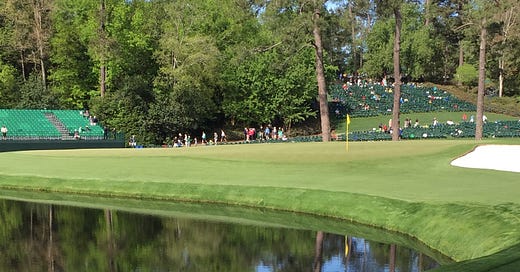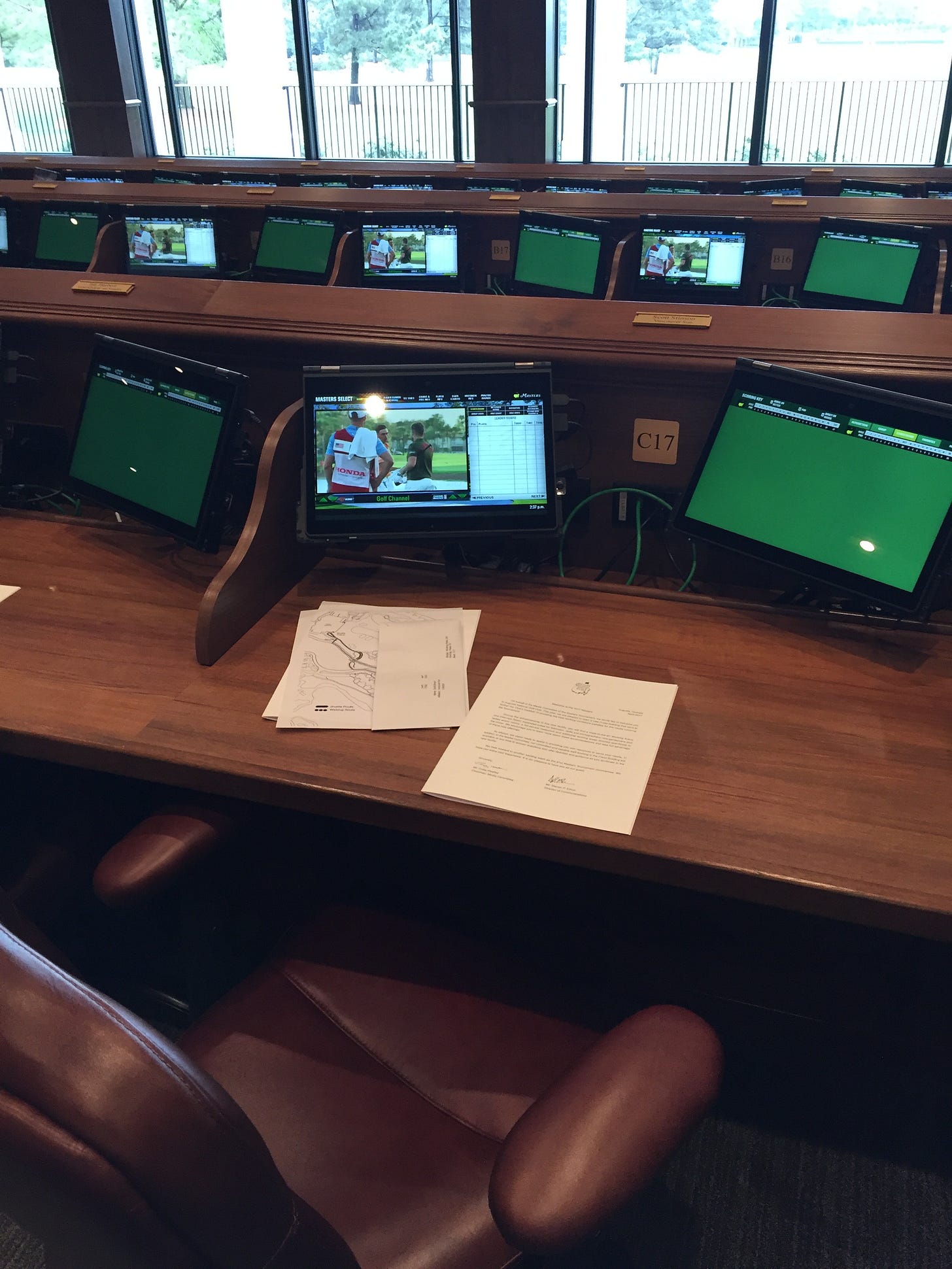Masters of their own house
Augusta National doesn't take orders from anyone, which is why it might be just the place to repair pro golf's long-running schism
The first time I arrived at Augusta National Golf Club it was in a rainstorm, or at least in the pause between storms.
I checked into the hilariously opulent media centre, found my desk with the leather chair that almost certainly cost more than any chair I have ever owned, did a little work, watched the rain pound the practice area, which the media centre overlooks.
When the skies cleared, it was time to go out to the course. Some colleagues showed me the way. As we approached the first fairway, I looked down at what seemed to be artificial turf. It made sense; this was an area just off the course that was like a main entryway. You could imagine that they might put some fake grass there so the traffic didn’t wear it out.
“That’s real grass,” I was told by a colleague who had been there before.
What? I bent down, looked closer. The impossibly verdant carpet was so thick and cut so low that it couldn’t be real. I crouched lower still, looking like someone who had lost a contact lens but in fact had just misplaced his dignity. When you got down in there, you could see tiny green bits of fertilizer. My word. It was actual grass. Then you look up and realize that they have done this over thousands of acres, created a lawn so lush and smooth that Versailles would be jealous.
What you say to yourself in that moment is: This place is nuts.
Augusta National defies all logic. It’s part Disney World, part royal palace, part super-exclusive snooty club, and also they hold a golf tournament there every spring. There is massive demand for tickets to the Masters, but they keep prices cheap and charge bargain prices for concessions. In an era of skyrocketing broadcast-rights fees, they didn’t put the Masters out to market, preferring to stick with their friends at CBS, who are allowed few commercial breaks.
Augusta National does what it wants, because it can. That media centre I mentioned? It’s just a few years old, built in the style of a Southern mansion fitting of the region, and replaced a perfectly good media centre that happened to be where they wanted to build a new merchandise shop. You know what a lot of golf tournaments do for a media centre? A tent. At Augusta, they spent millions to make the building look like it had been there a hundred years.
And so, as the Masters gets underway this year, one of the topics, as has been the case at every golf major for a couple of years now, is the future of LIV Golf. The breakaway Saudi league was once a fierce rival of the PGA Tour, then détente was struck last season, and now it is kinda-sorta something in between. A frenemy? Hard to say. The Public Investment Fund, the enormous pile of Saudi wealth that funds LIV Golf, still hasn’t made a deal with the PGA Tour, 10 months after the two sides agreed to stop fighting. The Tour can still claim to be deeper and more competitive, but its fields have been severely depleted in a way that can’t be good for long-term business.
Jon Rahm, the defending Masters champion, said on Tuesday that he had hoped that his decision to defect from the PGA Tour to LIV in December would have greased the wheels toward a deal between the two sides. Erm, OK. You thought that LIV poaching one of the Tour’s biggest stars would be seen as an act of reconciliation? Funnily enough, the PGA Tour doesn’t appear to have seen it that way, instead securing a deal for $3-billion of funding for a new for-profit golf entity from a bunch of rich American sports owners. The Saudis and PIF could yet throw their own billions into the new entity, but it would be odd to fund New Tour Thing while also bankrolling the rival LIV league. (Though the Saudis could afford it.)
Meanwhile, LIV has continued its curious low-key existence. It made news in Miami by rolling out Anthony Kim for interviews, including a sit-down with David Feherty, a LIV defector on the TV side. Kim’s a mystery, a 38-year-old former Ryder Cup star who gave up the game a dozen years ago while dealing with injuries and addictions. But his comeback with LIV hasn’t exactly helped make the case that it’s anything like a meritocracy. He reportedly borrowed clubs for his first event and has finished 53rd, 53rd, and 50th. LIV fields have 52 players and sometimes an injury replacement or two.
LIV also announced last month that it was giving up the fight for world-ranking points, which closes off a major pathway into golf’s majors for its roster of well-paid mavericks. It would seem to be a significant blow to LIV’s prospects as a going concern, but LIV frontman Greg Norman said he thinks the majors should be able to figure out other ways for LIV players to enter their fields beyond world-ranking points.
Which brings us back to Augusta National. The Masters can, and does, invite whoever it wants. It could add LIV wins to its list of qualifying criteria, or reserve spots for a certain number of players on the LIV points list. If it wanted to get really funky, it could grant entry to the members of LIV’s top teams, which would be great news to, say, one of the lesser Crushers.
The Masters granting legitimacy to LIV, on its own, would be a coup for the rebels, not just for the vibes but because it would allow LIV golfers to play their way back onto golf’s big stages. It would, at a stroke, solve one of LIV’s biggest problems.
Would it do this? I have no idea. But, as mentioned, Augusta National does what it wants.





